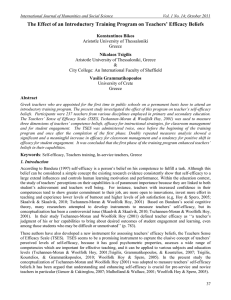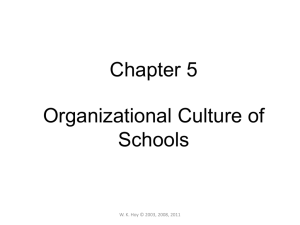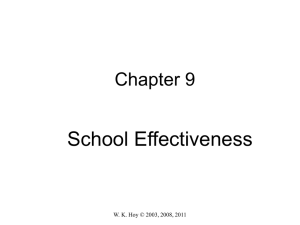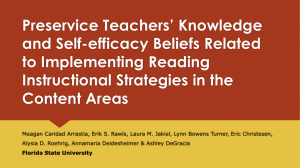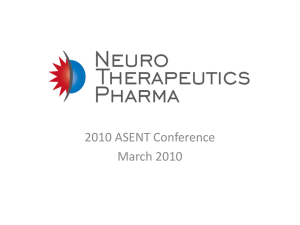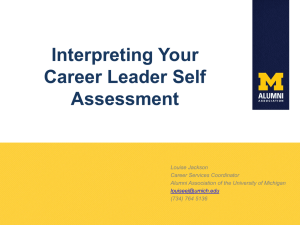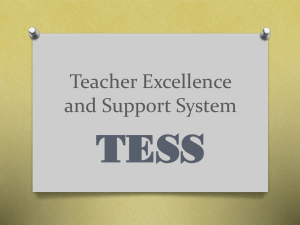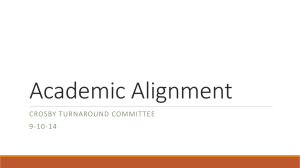Examining the Impact of Context on Preservice Teachers* Sense of
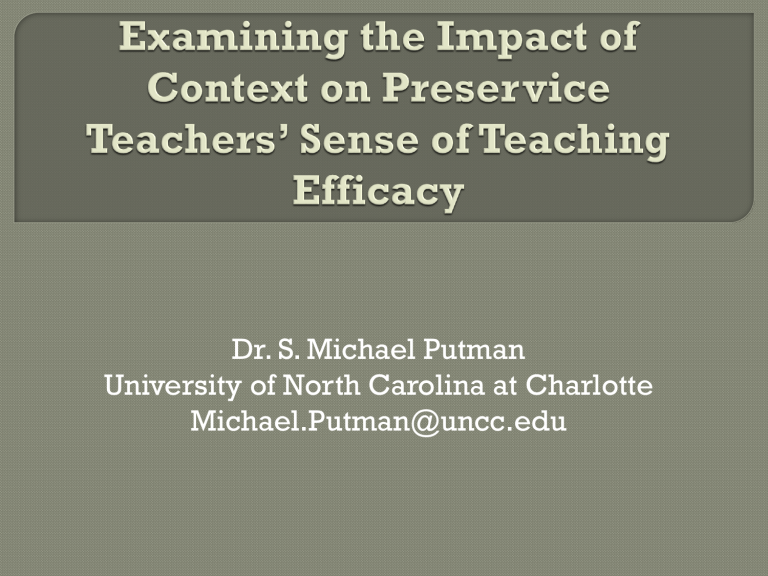
Dr. S. Michael Putman
University of North Carolina at Charlotte
Michael.Putman@uncc.edu
Teacher Preparation
•
• Theory-Practice Disconnect
Ball, Sleep, Boerst, & Bass, 2009; Grossman & McDonald,
2008
Field Experiences
Zeichner, 2010
Capraro, Capraro, & Helfeldt, 2010
Teaching Efficacy
• Bandura, 1997
Posnanski, 2007; Clift & Brady, 2005 •
Teaching Efficacy and Field Experiences
•
• Woolfolk Hoy & Spero, 2005; Knoblauch & Hoy, 2008
Oh, et al., 2005; Zeichner & Conklin, 2005
What is the impact of variations in programmatic delivery on the teaching efficacy of teaching candidates?
How do programmatic variations impact teaching candidates’ efficacy for classroom management, instructional strategies, and student engagement?
Elementary education majors admitted to the teaching curriculum
Combination of convenience and purposive sampling techniques (Teddlie & Tashakkori,
2009).
Two courses: foundations and practicum
Independent variable - specific delivery format
• looping (n = 25; 7 self-removed)
•
• blocked (n = 16) traditional (n = 25)
The Teachers’ Sense of Efficacy Scale (Tschannen-
Moran & Woolfolk Hoy, 2001)
•
•
•
• Two versions of the TSES – long form (24 items) and short form
(12 items)
TSES score - sum of most positive responses on items written along a 9-point continuum from 1 (nothing) to 9 (a great deal)
Example: How much can you do to control disruptive behavior in the classroom?
Includes domain-specific subscales to measure efficacy in student engagement, instructional strategies, and classroom management
High overall reliability for scale ( α = .90) and sub-scales:
student engagement ( α = .86)
instructional strategies ( α = .81)
Management ( α = .86)
Measurement at beginning of foundations and end of practicum for three delivery formats
1 st admin (n = 16)
TSES M
Total Score 67.06
SE 25.56
IS
CM
17.50
24.00
SD
8.32
4.08
2.73
3.83
2 nd admin (n = 16)
M
83.63
29.81
23.25
30.56
SD
8.83
3.76
2.35
3.75
Mean Score
Differences
16.57
4.25
5.75
6.56
t-test
(df=30)
5.46**
3.06**
6.38**
4.89**
Note .
SE = Student Engagement; IS =
Instructional Strategies; CM = Classroom
Management
* p < .05, ** p < .01
ANOVA #1 to investigate differences on scores at first administration
• Independent variable: context (looping, blocked, traditional)
•
• Statistically significant differences based on group membership at p < .01
Total score (F = 23.65)
Classroom management (F = 14.97)
Instructional strategies (F = 19.12)
Student engagement (F = 18.07)
Post hoc analysis - Tukey’s HSD
Candidates enrolled in looping section signficantly higher in overall efficacy and for each domain-specific subscale
ANOVA #2 to investigate differences on final administration
•
• Independent variable: context (looping, blocked, traditional)
Statistically significant differences based on group membership at p < .01
•
Total score (F = 16.89)
Classroom management (F = 9.14)
Instructional strategies (F = 23.97)
Student engagement (F = 10.75)
Post hoc analysis - Tukey’s HSD
Traditional program was significantly lower than looping and blocked groups
Blocked Section benefited from:
•
•
•
Multiple opportunities to implement instructional and management strategies described in coursework immediately in context
Mastery and vicarious experiences
Theory to practice connection
Continuity and coherence between program purposes and field experiences (see Hammerness et al., 2005)
Vicarious experiences
Reinforces selecting competent, skilled teachers for practicum
Direct access to a university supervisor, cooperating teacher, and peers at several points during the day
Social Persuasion
Access
Ball, D., Sleep, L., Boerst, T., & Bass, H. ( 2009). Combining the development of practice and the practice of development in teacher education. Elementary School Journal, 109(5), 458-474.
Clift, R. T., & Brady, P. (2005). Research on methods courses and field experiences. In M. Cochran-Smith, & K. M. Zeichner (Eds.),
Studying teacher education: The report of the AERA panel on
research and teacher education (pp. 309–424). Mahwah, NJ:
Lawrence Erlbaum Associates Publishers.
Grossman, P., Hammerness, K., & McDonald, M. (2009). Redefining teaching, re imagining teacher education. Teachers and Teaching,
Theory and Practice, 15(2), 273-289.
Grossman, P., & McDonald, M. (2008). Back to the future: Directions for research in teaching and teacher education. American
Educational Research Journal, 45, 184-205.
Hammerness, K., Darling-Hammond, L., & Bransford, J. (2005). How teachers learn and develop. In L. Darling-Hammond & J. Bransford
(Eds.), Preparing teachers for a changing world (pp. 358-389). San
Francisco: Jossey-Bass.
Knoblauch, D., & Hoy, A. (2008). “Maybe I can teach those kids.” The influence of contextual factors on student teachers’ efficacy beliefs.
Teaching and Teacher Education, 24, 166-179.
Oh, D. M., Ankers, A. M., Llamas, J. M., & Tomjoy, C. (2005). Impact of preservice student teaching experience on urban school teachers. Journal of
Instructional Psychology, 32(1), 82-98.
Posnanski, T. J. (2007). A redesigned Geoscience content course’s impact on science teaching self-efficacy beliefs. Journal of Geoscience Education,
55(2), 152-157.
Tschannen-Moran, M., & Woolfolk Hoy, A. (2001). Teacher efficacy:
Capturing and elusive construct. Teaching and Teacher Education, 17, 783-
805.
Woolfolk Hoy, A., & Spero, R. B. (2005). Changes in teacher efficacy during the early years of teaching: A comparison of four measures. Teaching and
Teacher Education, 21, 343-356.
Zeichner, K. (2010). Rethinking the connections between campus courses and field experiences in college- and university-based teacher education. Journal of Teacher Education, 61, 89-99.
Zeichner, K., & Conklin, H. (2005). Teacher education programs. In M.
Cochran-Smith & K. Zeichner (Eds.), Studying teacher education (pp. 645-
735). New York: Routledge.


